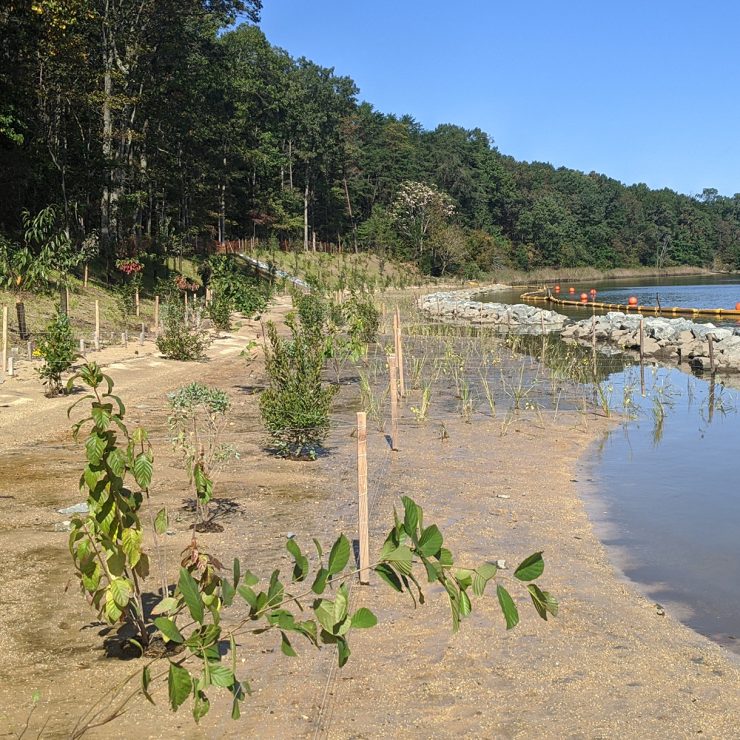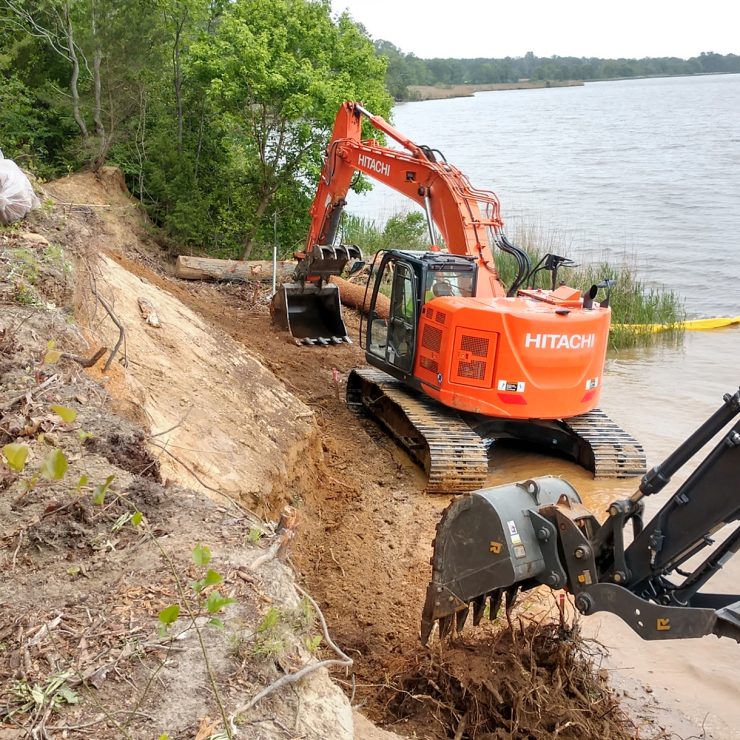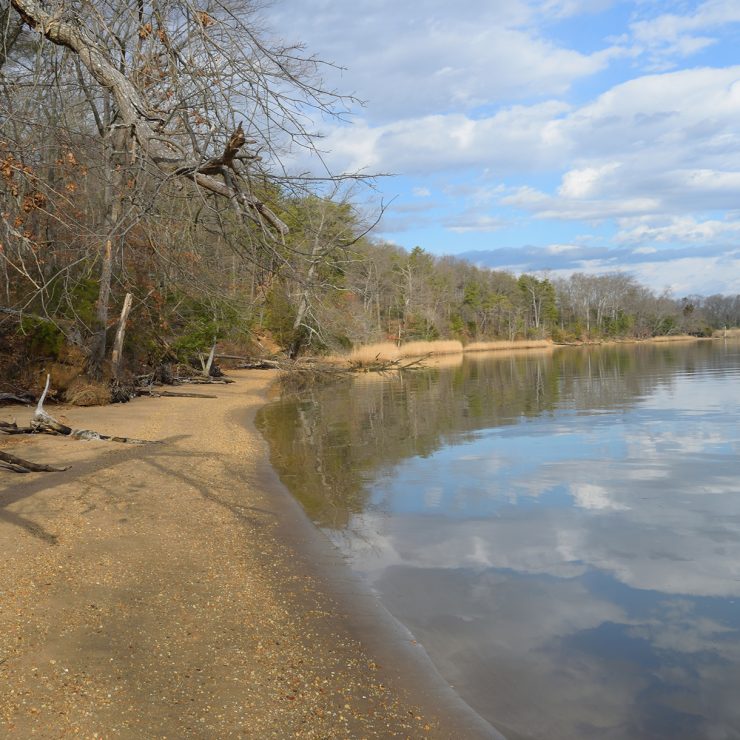By: John Bishop, Jr., Water Resources Engineer
What’s the Problem?
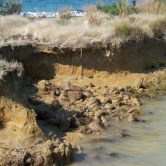
Eroded Shoreline
The Chesapeake Bay and its tidal tributaries have 11,684 miles of shoreline and it is estimated that 85% is controlled by private landowners. Every year, property owners are managing an ongoing battle with tidal erosion. While tidal erosion is naturally occurring, it is exacerbated by coastal development and other human activities. The Maryland Shore Erosion Task Force has estimated that 260 acres of tidal shoreline is lost each year in Maryland. Not only does this endanger waterfront real estate, but it also translates into 4.7 million cubic yards of sediment to the Bay. This has serious repercussions to critical habitats like Submerged Aquatic Vegetation (SAV) beds, which crabs and fish use as a food source and home.
In the past, shore erosion has been controlled with structural techniques like bulkheads or revetments (a layer of large stone lining the shore). Over 300 miles of tidal shoreline were estimated to have been armored with a structural approach from 1978 to 1997. While these techniques are effective and in some cases, necessary, they can also have a negative impact to local habitats and adjacent shorelines. Waves are a major contributor to shoreline erosion. Structural techniques tend to reflect wave energy instead of absorbing them, causing scour of SAV zones and increasing erosion rates on adjacent shorelines. These methods also provide little help to the Bay by improving water quality or natural habitats.
What’s Another Alternative?
Living Shorelines have become a popular non-structural or hybrid shore stabilization approach that utilizes concepts that conserve and protect plant, fish, and wildlife habitat. Not only do these methods reduce detrimental erosion, protect the land and improve Chesapeake Bay habitats, but they can also be a cheaper choice than a structural technique like a bulkhead. The following are examples of Living Shoreline strategies that are being utilized by Straughan Environmental and others along the Atlantic coast.
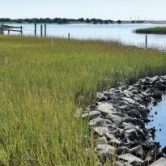
Example of rock sill with marsh establishment
Marsh or Vegetation Establishment
Marsh and vegetated areas are the most common natural erosion defense systems. Their roots bind sand or soil together and its transition zone helps to buffer or dampen wave energy, reducing the effects of erosion. Tidal marshes are also effective at removing harmful pollutants and nutrients, providing an additional source to improve water quality in the Chesapeake Bay.
Sills
For areas where wave action is stronger, sills can be a great alternative. Sills are low-lying structures that run parallel to the shoreline, with the tops only slightly exposed at high-tide. They are commonly made from stone and provide stable protection against erosion when waves have more energy. These structures differ from bulkheads because they slow waves down so that their destructive forces are reduced as opposed to reflecting the energy to a different direction. These are also combined with marsh establishment, which adds an improved habitat feature to this strategy.
How Do I Get One for My Property?
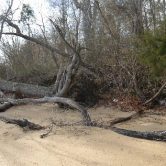
Downed tree along an eroding bank
The first step would be to look for signs of active erosion. One example would be a loss of land. This could be occurring at the beach or along the banks of the shoreline. Often the banks will become vertical or undercut due to waves eroding away the base of the bank. Another example is downed or falling/leaning trees. This happens when the shoreline bank is being undercut or removed, destabilizing tree rootzones.
A guide published by the Maryland Department of the Environment provides more information on the causes of shoreline erosion and Living Shoreline strategies: “Shore Erosion Control Guidelines for Waterfront Property Owners – Second Edition“. In addition, it outlines strategies for obtaining funding or grants for your living shorelines project.
Also refer to the Maryland Department of Natural Resources website for Living Shorelines for further guidance on financial and technical assistance.
